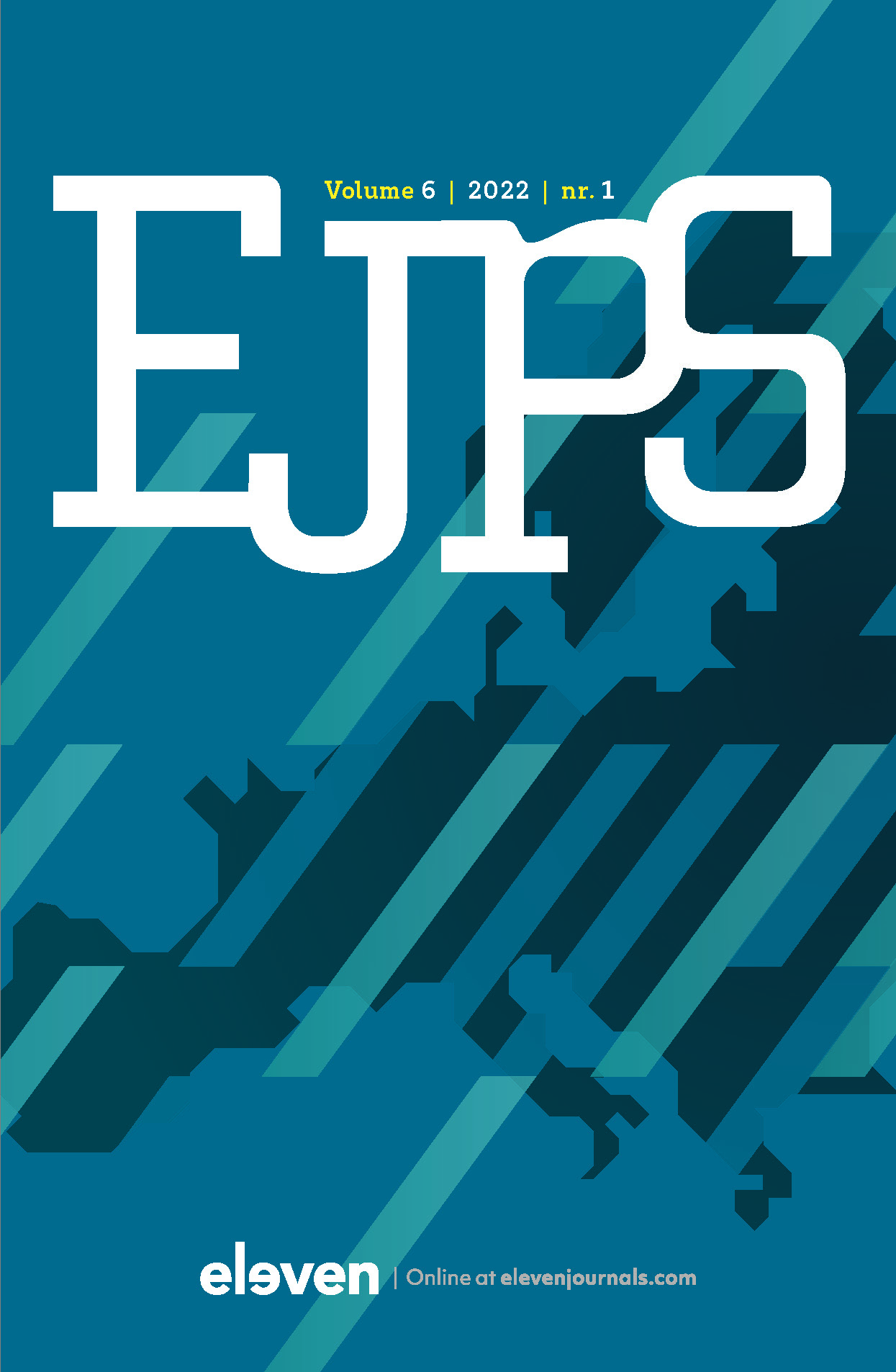|
Drawing on her ethnographic doctoral research, the author reflects on the challenges of employing a feminist methodology when observing the police. The article will discuss the fraught process of gaining trust and sustaining fragile access by betraying the self. The feminist killjoy (Ahmed, Living a Feminist Life; Ahmed, The Feminist Killjoy Handbook) is used as a lens to examine the author’s response to the political and ethical dilemmas that she encountered during fieldwork. This will lead to considering whether a “critical empathy” framework is a valuable approach to conducting police research from a feminist perspective. This discussion will offer new tools for dealing with the emotional complexities of ethnographic research. It will make a strong case for the possibilities and importance of conducting feminist research about the police. |


European Journal of Policing Studies
About this journalSubscribe to the email alerts for this journal here to receive notifications when a new issue is at your disposal.
| Article |
Masking the Inner-Killjoy: A Critical Feminist Perspective on Police Research |
| Authors | Leah Molyneux |
| AbstractAuthor's information |
| Article |
Risk, Threat or Vulnerability? An Ethogram to Qualify Concerning Behaviour of Citizens in Police-Civilian Interactions via Bodycam Footage |
| Keywords | concerning behaviour, police-citizen interaction, bodycam footage, human ethology, ethogram |
| Authors | Miriam S.D. Oostinga, Virginia Pallante, Fleur van der Houwen e.a. |
| AbstractAuthor's information |
|
All around the globe, police first responders are confronted with an increasing number of citizens showing concerning behaviour. These citizens are a harm to themselves or others, and to prevent further (physical) escalation from occurring, it is important that police officers quickly make sense of the situation and take follow-up actions (e.g. call for a healthcare or police intervention team). To do this, police should know what behaviour to look out for. Yet, previous research on these interactions predominantly used interview, case study and police database data which do not allow for direct observation of behaviour. In this article, bodycam-footage-based human ethology is considered as a method to overcome this issue. The dataset used for this study consisted of 14 police-citizen interactions in which citizens display concerning behaviour. From this dataset, an ethogram was created, identifying 21 types of concerning behaviours that citizens displayed. It was feasible to reliably code this behaviour on a situational level. This article sets out to inspire other academics to use human ethology in policing studies and provides a starting point for research specifically focusing on concerning citizen behaviour. |
| Article |
Design Things in Ethnographic Police Research |
| Keywords | design, ethnography, methodology, technology, policing |
| Authors | Thomas Marriott |
| AbstractAuthor's information |
|
How, and in what ways, can design practice contribute to observational research on policing? This article outlines the potential for design research methods, and more specifically, “design Things”, to be used in ethnographic policing research. The article outlines some of design practices’ unique epistemic qualities, describes what design Things are and suggests they might relate to ethnographic policing research. Reflecting on doctoral research into police use of body-worn video cameras, the article discusses how design Things have successfully been used to introduce specific questions, matters of concern and elicit speculations from research participants. As well as highlighting the possibilities of this novel methodology for policing research, the challenges and ethical considerations are also considered. |
| Article |
“It’s almost the 14th of February [Valentine’s Day] so I thought of you”: The Role of Positionality in Navigating Field Relations during a Police Ethnography |
| Keywords | policing, ethnography, positionality, ethnographic toolkit, reflexivity |
| Authors | Laura Danique Keesman |
| AbstractAuthor's information |
|
Positionality, along with reflexivity, is a key component of ethnographic research. Traditional male-oriented police ethnographic accounts, however, rarely include a reflection on how researchers’ positionality shaped the research process. While a growing number of female police scholars reflect on gendered power dynamics and strategies for managing trust or flirtatious behaviour, the literature is inconclusive regarding the tension between maintaining field relations characterized by trust while also maintaining a measure of invisibility. In this article, I examine how my positionality impacted the course of fieldwork during a long-term ethnography of the Dutch police. I discuss how my gender and former social work profession, in particular, challenged and provided a resolution through field relations while establishing (in)formal access and gathering data on violent interactions. Moreover, I reflect on the usefulness of Shakespeare’s concept of “confessions of ignorance” and Reyes’ “ethnographic toolkit” as strategies to navigate discomfort and build rapport. The article contributes to the field of policing studies by exploring how we can transform our inevitable differences from liabilities to valuable research assets, enhancing our understanding of the complexities involved in conducting ethnographic police research. |

